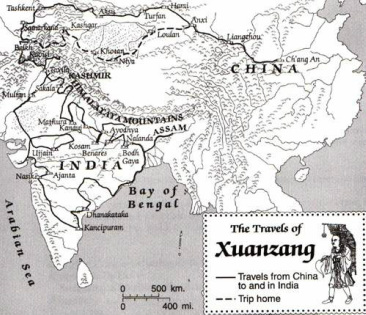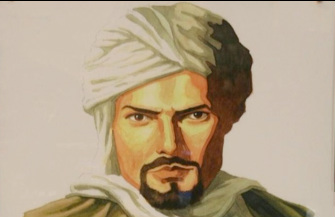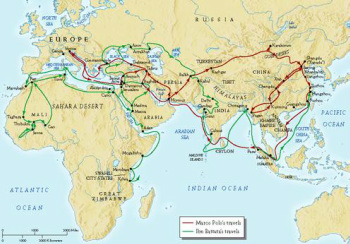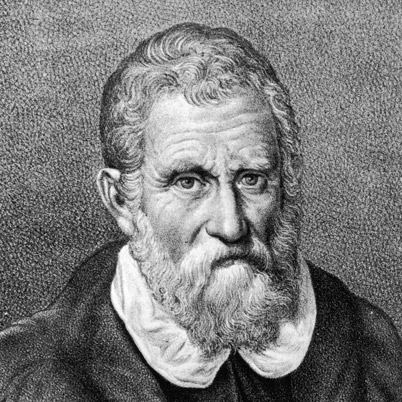XuanzangXaunzang was a Buddhist monk from China who made the journey to India through deserts and mountain ranges for 16 years. He was a Buddhist monk, traveler translator, and a scholar by the time he died. During a ten-year stay in India Xaunzang visited many Buddhist temples and Buddhist teachers which allowed him to create many manuscripts about the Buddhist teachings to take with him back to China. The rest of Xuanzang's life was spent in teaching, advising and translating manuscripts that made the journey home with him. Following his journey, Buddhism became more prevalent and more widely understood in China and subsequently elsewhere in the world. The record of his pilgrimage helps us to study and understand Buddhism and the cultures along the Silk Roads. He recorded his journey to India in Great Tang Records on the Western Regions.
|
Ibn BattutaIbn Battuta was a Muslim explorer from Morocco who made expeditions to North Africa, the Horn of Africa, West Africa, Southern Europe and Eastern Europe in the West, and to the Middle East, South Asia, Central Asia, Southeast Asia and China in the East. His journey brought him to almost 100,000 total miles traveled. Ibn Battuta documented his travels in Ibn Battuta: Travels in Asia and Africa and in it he said that traveled alone only, which eliminates any exterior biases from companions making his accounts solely his and creates a bias of his own. What the people of the middle east learned of the West and of Europe is solely his account. Ibn Battuta used his religion as a major motivator in his writings and traveled to all the major religious sites, seeked out all the religious leaders and wrote about them from an Islamic viewpoint. For example he had wrote better about those who treated Muslims better. His most famous writing is about his pilgrimage to Meeca. His writings were mainly about the trade routes and anthropology of the lands. This introduced a burst in economy in the Middle East because they learned about new trade routes and new goods that could be used.
Marco PoloMarco Polo was a Venetian Merchant and Traveler. He recorded much of his travels in the "Travels of Marco Polo", documentation that introduced Europe to the Culture, principles, and ideas of Central Asia, the Middle East and China. During his travels Marco Polo claimed to have met and become a significant person at the Mongol court of Kublai Khan. Kublai Khan then requested that Marco Polo deliver him a letter to the pope requesting 100 Christians familiar with the seven arts, as well oil of the lamp in Jerusalem. In 1271 Marco Polo along with Niccolo and Maffeo embarked on a voyage to fulfill the request of Kublai Khan. They sailed to Acre, Israel and then traveled by land through the Persian port of Hormuz all the way to Khan's residence in Shangdu. They presented Khan with the oil and papal letters, and were welcomed in by Khan with much hospitality. At first Khan denied Polo's request to leave based on the danger that could come from Khan's enemies if he were to die. However they eventually accompanied Khan on a 1 year trip to Persia and the Port of Hormuz to attend a wedding. Marco Polo eventually returned to Venice, at war with Genoa, where he was imprisoned. During his time imprisoned is where he began telling the stories of his voyages and travels, leading to the spread of various East Asian cultures and ideas into Europe. His legacy and extravagant stories influenced other explorers, such as Christopher Columbus to explore and voyage the far East.
|




